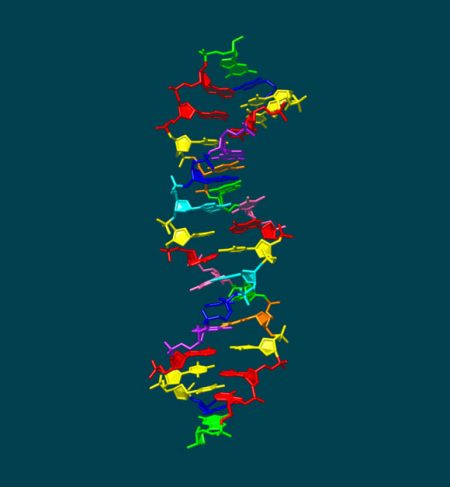February 28, 2019 – Scientists at the Foundation for Applied Molecular Evolution in Florida have for the first time created an eight-letter genetic language that works just lake nature’s four-letter version. Heading up the Florida team is Steven Benner, a pioneer in the field of synthetic biology and a Fellow of the International Society for the Study of the Origin of Life, an organization of academics whose research focuses on astrobiology, the search for life elsewhere in the Universe.
Natural DNA uses four base chemicals: guanine (G), cytosine (C), adenine (A), and thymine (T). These are commonly referred to by their letters only, and in their pairing transcribe the information of life. Natural DNA pairs match up as A to T, and C to G. These are referred to as DNA’s base pairs.
So why would researchers want to add more chemical bases to DNA?
One reason could be to use DNA for other purposes than just creating life.
For example, since DNA biologically is a rich information repository that turns out life in enormous varieties here on Earth, if we increase the number of base pairs we could use its information storing capacity for data storage with pairings acting like the logic gates in computers today.
DNA is a very stable molecule and therefore could make biological computing on a grand scale. Imagine nano-sized computers, smaller and more powerful than anything we have built on silicon.
Natural DNA uses hydrogen-based chemicals for the pairing that occurs in the double helix. The artificial DNA developed by Benner and his team uses water-repelling molecule-based chemicals. They have demonstrated that their synthetic DNA not only replicates just like natural DNA, but also transcribes into RNA, the messenger organic molecule used by our living cells to execute DNA’s instructions.
Is an eight-pair DNA capable of developing into synthetic life?
Not yet. But what the research shows is that DNA doesn’t necessarily have to use the base-pairing chemicals found here on Earth. There could be many other chemical base pairs working with DNA to create all kinds of different life in the Universe.
And adding new chemical base pairs could lead to medical breakthroughs to use synthetic DNA to treat genetic and epigenetic-linked diseases. Conceivably synthetic DNA could lead to new medical diagnostic tools as well.
Is eight different chemical bases the limit?
The answer to the above question is “No.” The Florida research team are looking at adding structures to make DNA work with 10 or 12 chemical bases translating to 5 and 6 base pairings.
What could that mean? DNA that could be put to uses we have yet to even conceive.
The research results appeared in the February 22, 2019 issue of the journal Science in an article entitled, Hachimoji DNA and RNA: A genetic system with eight building blocks. The researchers picked the name Hachimoji for their DNA construct. Hachimoji is a combination of two Japanese words, “hachi” meaning “eight,” and “moji” meaning “letter.”
















